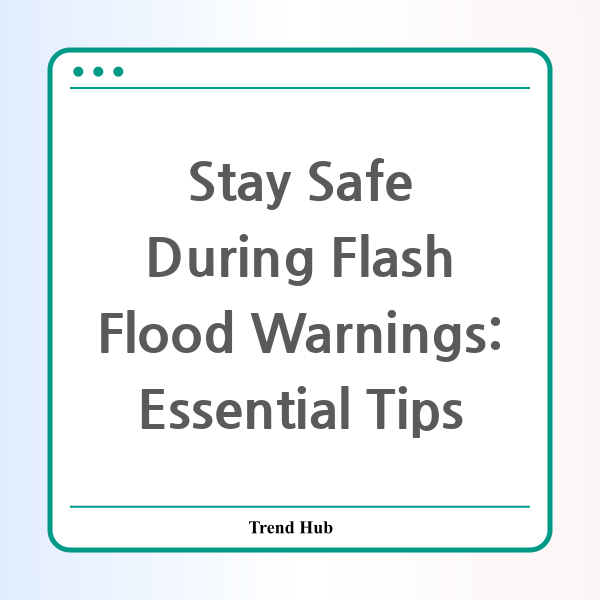* This website participates in the Amazon Affiliate Program and earns from qualifying purchases.

As the weather patterns shift and storms become increasingly unpredictable, flash flood warnings are becoming more common. Have you ever wondered how to stay safe during such emergencies? With recent reports of severe storms leading to significant flooding in various regions, it's crucial to understand the nature of flash floods, the warnings, and how to protect yourself and your loved ones.
What is a Flash Flood?
A flash flood occurs rapidly as a result of intense rainfall or the sudden release of water. Unlike regular floods, flash floods can develop within minutes to hours, making them particularly dangerous. Areas that may not even experience heavy rainfall can still be at risk due to upstream rain or rapid snowmelt.
Understanding Weather Alerts
When severe weather arises, different alerts are issued to prompt appropriate responses. Here’s a breakdown of what each alert signifies:
- Flash Flood Warning: This alert means a flash flood is either imminent or occurring. If you are in a flood-prone area, move to higher ground immediately!
- Flood Warning: Indicates that flooding is occurring or will occur shortly in your area.
- Flood Advisory: Released when flooding is expected but not severe enough to issue warnings. Caution is still necessary.
- Flood Watch: This means conditions are favorable for flooding; be prepared!
Recent Events Highlighting Flash Flood Risks
For instance, in the Metro Detroit area, storms left behind damage with reports of flash floods impacting streets, sidewalks, and low-lying regions. Despite the cancellation of some flash flood warnings as conditions improved, authorities emphasized the potential dangers of remaining floodwaters. Such occurrences remind us that staying informed and prepared is essential during storm season.
Safety Tips for Flash Floods
Here are several expert-recommended tips to ensure your safety during a flash flood warning:
- Seek Higher Ground: If you live or are in a flood-prone area, immediately move to higher ground once a flash flood warning is issued.
- Follow Evacuation Orders: If local authorities issue an evacuation order, heed this advice promptly.
- Disconnect Utilities: If time permits, disconnect utilities and appliances to prevent electrical hazards caused by flooding.
- Avoid Basements: Stay away from basements or submerged areas to avoid electrical accidents.
- Do Not Walk in Floodwaters: Even a few inches of moving water can knock you off your feet. Avoid crossing flooded roads.
- Stay Informed: Keep an eye on local weather alerts and forecasts, utilizing reliable weather apps for the latest updates.
Driving During Heavy Rain
Heavy rain can transform roads into hazardous zones. Follow these driving tips to ensure your safety:
- Maintain Safe Distances: Use the two-second rule to keep a safe distance from vehicles ahead.
- Slow Down: Reduce speed in rainy conditions, avoiding sudden stops to prevent skidding.
- Choose Your Lane Wisely: Stick to middle lanes where water is less likely to accumulate.
- Turn On Headlights: Improve visibility during heavy rain to help other drivers see you.
Conclusion
The dangers of flash flooding should never be underestimated. Vigilance, preparedness, and knowledge of proper responses are key to ensuring safety during adverse weather conditions. As storms continue to pose risks, remember to stay informed, follow safety guidelines, and prioritize your well-being above all else. Stay safe, and be proactive!
* This website participates in the Amazon Affiliate Program and earns from qualifying purchases.